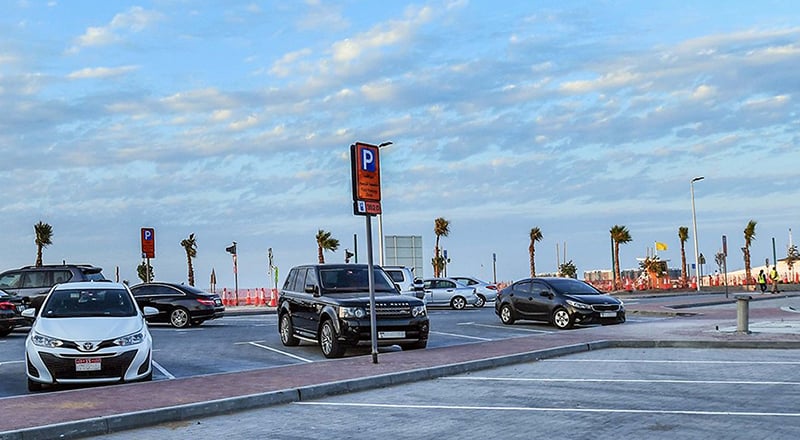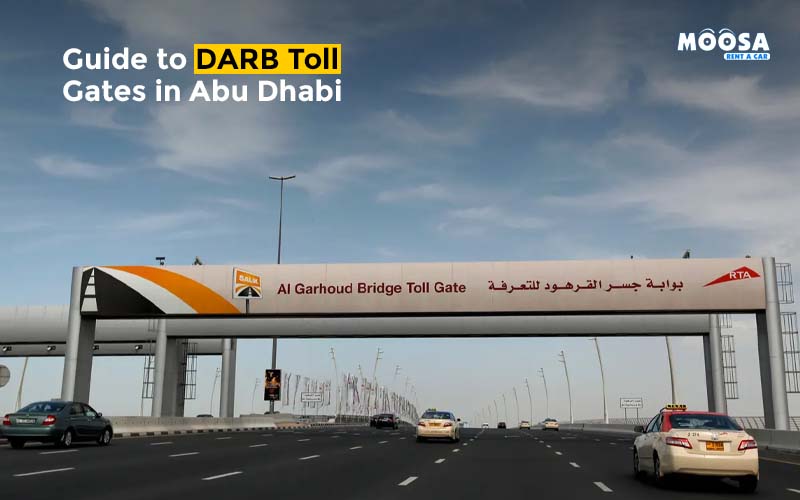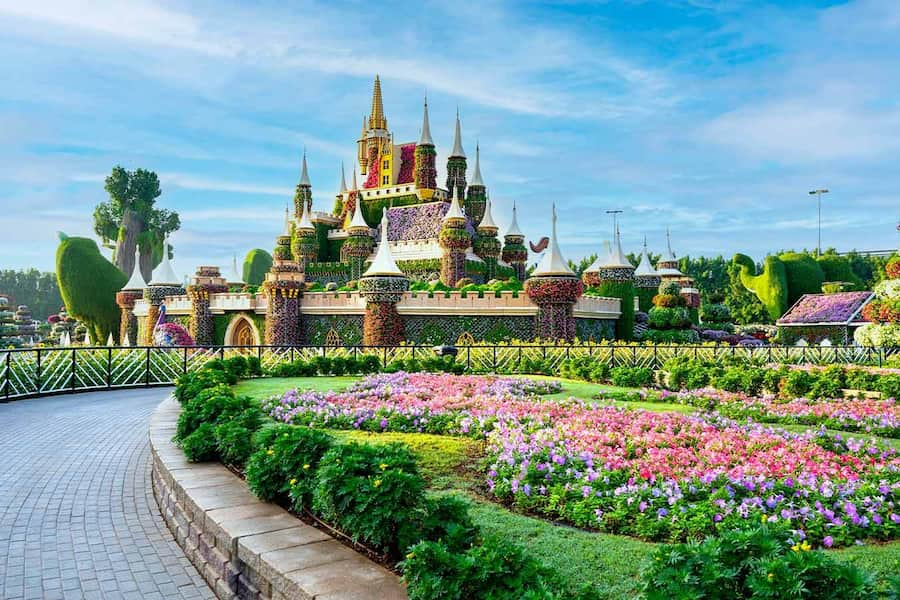Despite being the second smallest emirate in the UAE, Umm Al Quwain possesses a lot of history. One of its strong points is the tranquility that distinguishes it. An important point of interest for tourists is the Umm Al Quwain National Museum (UAQ Museum). This acts as a repository of the city’s cultural heritage and history.
Here’s the complete guide touching everything about the Umm Al Quwain Fort and Museum:
Umm Al Quwain National Museum Overview
The UAQ Museum is located in a fort that used to be the residence of the emirate’s ruling family. One of the many features of the museum presents the various items collected from Ed-Dur. It is one of the largest archaeological sites in the UAE and an important lost city of Arabia. Also found in the museum there are exhibits that teach the warfare history of the area. Including the early cannon guns.
The museum is located in the old Souk area called Madeena Al Qadeema (The Old Town). It is surrounded by houses that are more than 150 years old. Thus representing the old character of the city. The fort has proven its worth as one of the best-preserved buildings in the region despite its age.
Worth Seeing Collections at the Museum

Even with its small size, Umm Al Quwain National Museum is provocative with its unique exhibits:
1. Towers
The fort consists of six towers, with each having a specific function. The eastern tower was used as a prison, and the western tower as a storage space for weapons and ammunition. These towers, in addition to the soldiers’ and guards’ living needs, provided shelter.
2. Courtyards
Inside the fort, there are two vast courtyards. One of them is the larger courtyard, which was the place for various official gatherings. Including talks between local leaders and British officials during the colonial period. Both courtyards surrounded the rooms that were the living quarters assigned to the ruling family and the servants.
3. Museum
The fort was transformed into a museum and now stands as a testimony to the history and culture of the UAE. You may find articles related to traditional crafts practiced by Emiratis. Like weaving, pottery, embroidery, and relics. These will pertain to the construction of the fort and its role during the British colonial period.
4. Artifacts from Ed-Dur
One of the major attractions in the museum is the collection of artifacts assembled from the Ed-Dur archaeological site. These date back more than 2000 years. This site used to be an important hub for merchants and the exhibits. It includes pottery, coins, and tools, depicting the lives of the people who lived there.
5. Royal Kitchen Setup
The kitchen of the fort illustrates old utensils and fire pits. This shows how dishes such as biryani, curries, and coffee were prepared in the past.
6. War History Exhibits
The fort was established in 1768. It was once the ruling family’s house and had a lot of people involved with it. Visitors can find tents set up with old cannons, swords, and weapons. These were used in regional battles displaying the emirate’s military history.
7. Historical Documents
The museum shows historical documents that were crucial to the period in history. Like the first passport, trading license, driving license, and stamp that was issued in Umm Al Quwain. Additionally, handwritten copies of the Qur’an dating back to the 17th Century are exhibited.
8. Royal Heritage Section
In this section, one can see items that belonged to the ruling family. Such as swords, coins, jewelry, and the gold-glazed family tree. The artifacts from Ed-Dur and Tell Abraq, like the falcon statues and the ancient stone plate,s are also exhibited here.
9. Photograph Section
Old photos represent the history of Umm Al Quwain. These show the visitors the development of the region through the passage of time.
10. Maritime Heritage Section
This section is especially for people who are passionate about the sea. It has sea equipment and models of traditional pearl fishing boats. Like Sanbook, Jalbot, and Samma. Another area highlights the traditional professions like tailoring.
11. Documentary Room
In the documentary room, the Story of the Tower portrays the history of the rulers. And also explains the history of the loyal subjects who supported them.
12. Market Section
This display is set in a local market. Here groceries such as Attar and Mahloa are exhibited along with a traditional coffee shop.
13. Sheikh’s Room
The Sheikh’s room is a traditional Arabic meeting area, and the bedroom is decorated. As it used to be at that time, visitors may walk through the two rooms.
Other Interesting Rooms
Visitors can also check out the Med Vasa room, which used to be for storing dates. Another guest room is there, aimed at the traditional majlis setup with floor cushions, beds, and cradles.
Prison Room
The prison room is not part of the fort and one has to go through a narrow, gloomy path to reach it.
Important Things to Consider
Hours of Operation: It is provided that their hours are checked before a visit because they could change.
Weather: The climate of the region can be hot and humid especially in summer. So, it will be good to hydrate and dress appropriately.
Photography: Generally, it is allowed but warriors, staff, and visitors should ask permission before taking pictures.
Language: The English language is predominantly spoken, but knowing basic Arabic phrases can be of help.
Cultural Sensitivity: Be respectful to the exhibits, do not touch the displays without permission.
Restrooms and Wheelchair Access: Restrooms are available, and wheelchairs can be obtained at the entrance.
Timings of Umm Al Quwain National Museum
The museum is open during the following hours:
Saturday to Thursday: 8:00 AM to 2:00 PM
Fridays: 5:00 PM to 8:00 PM
To fully enjoy the museum, you need only one to two hours. It is sufficient, making it a good stop on a day tour through Umm Al Quwain. After that, you will have enough time to visit other places in the emirate. For inquiries, the museum can be reached at +971-6-765-0888.
Ticket Prices of Umm Al Quwain Museum
Museum ticket prices are set as follows:
Adults: AED 4
Children under 15: Free entry
The museum is significant in terms of preserving the history of both Umm Al Quwain and the rest of UAE. Daily, it gets hundreds of visitors, including locals, GCC nationals, expatriates and tourists. Besides, it is a perfect choice for families.
Location and Getting to Umm Al Quwain National Museum
Al Lubna Road in the Umm Al Quwain emirate is where you will find the Umm Al Quwain National Museum. You can get to the museum by means of a car or taxi, en route from the other emirates. For instance, residents of Sharjah can access the site via E11 in about 30 minutes. It takes around 45 minutes to travel from Dubai.
Best Time to Visit
The best time to visit the Umm Al Quwain National Museum is between November and March. As the weather becomes cooler. Also, it is advisable to get there early in the day during the week. As less crowded and midday heat are expected.
Wearing Tips at the Museum
Visitors are advised to dress modestly as a way of respecting local traditions:
Men: Long pants and shirts
Women: Loose-fitting clothes that cover shoulders, arms, and knees. Comfortable shoes are recommended due to the distance that will be covered.
The Museum’s History
The Umm Al Quwain Fort and Museum are also known as Al Ali Fort. This history goes back to the year 1768 when it was built by Sheikh Rashid Bin Majid Al Mualla. He was the founder of the Al Mualla ruling dynasty. At the very beginning, it was supposed to be the place for the ruling family. But later it became the government’s seat until the 1960s. After that, it turned into a police station. The fort was changed into a museum and opened to the public in 2000, with the support of Sheikh Rashid Bin Ahmed Al Mualla. He was a member of the UAE Supreme Council and Ruler of Umm Al Quwain.
Other Historical Sites Nearby
The other historical site that stands out alongside the Umm Al Quwain National Museum is the Falaj Al Mualla Fort. It is situated in the inland town of Falaj Al Ali. This is a 19th-century building that was constructed and launched to the public in 2015.
Our guide on the Umm Al Quwain National Museum comes to an end here. After spending time at the museum, you can also visit the various parks in the emirate. These are ideal for relaxing or picnicking with your family.








